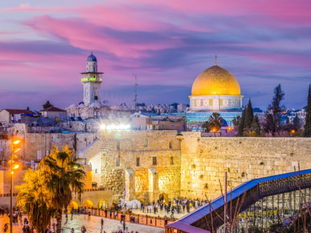Culture Mosaic Club

Chinese New Year: A Celebration of Family, Prosperity, and Tradition
Feb 15
3 min read
0
28
0
Written By: Jiseop K.

Introduction
Every year, around Lunar New Year’s Day (approximately late January to mid-February in the Gregorian calendar), Chinese communities worldwide come together to celebrate Chinese New Year with their families. This festival is not just a New Year’s celebration; it is a centuries-old tradition that strengthens family bonds, fosters community unity, and symbolizes hopes for a prosperous future.
In 2024, Chinese New Year was inscribed on UNESCO’s Representative List of the Intangible Cultural Heritage of Humanity, highlighting its cultural value and significance. UNESCO described it as a representation of cultural diversity and community spirit passed down through generations. This article explores the origins, traditions, and modern transformations of Chinese New Year and its role in fostering unity in the community.
1. The Origins and History of Chinese New Year
Chinese New Year (春节) is one of the most significant traditional festivals in China, celebrated on the first day of the lunar calendar. Historically, it has been referred to by names such as; 'Suishou (岁首)', 'Yuanyil (元日)', 'Yuanshuo (元朔)', and 'Zhengdan (正旦)' This day marks the beginning of the lunar year, during which families exchange New Year greetings and blessings, preparing to welcome a fresh start.
The colloquial term 'Nian (年)' originates from ancient oracle bone scripts, combining the
characters for 'grain (禾)' and 'person (人)'. This indicates a connection between agriculture and human activity. The Shuowen Jiezi explains that 'Nian' signifies 'the ripening of crops' showing how ancient people based their calendar around agricultural cycles.
The celebration of Chinese New Year is believed to have originated from sacrificial ceremonies during the era of the Three Sovereigns and Five Emperors. Over time, rituals evolved with dynastic changes. By the Western Zhou Dynasty, customs such as ancestral worship, greetings, and prayers were already established. During the Han Dynasty in 104 BCE, Emperor Wu formalized the lunar calendar by proclaiming the first day of the lunar year as the start of the New Year.
Source: Visit Beijing

2. Traditional Customs and Their Significance
Chinese New Year is celebrated with numerous traditions that have been passed down through
generations. Below are some notable customs and their meanings:
1. Spring Couplets (春聯): On Lunar New Year’s Eve, families adorn their doors with red couplets featuring elegant verses that express hope for a better life. This custom
symbolizes positivity and a fresh start to the New Year.
2. New Year Greetings (拜年): On the first day of the lunar year, families exchange
blessings for health and happiness through respectful bows and hand gestures
3. Red Envelopes (压岁钱): Elders give red envelopes containing money to younger
generations, symbolizing good fortune and protection from evil spirits. Red envelopes
(Hongbao) are especially common, as the color red is believed to ward off evil and bring
positive energy. Traditionally, money was tied with colored strings into dragon shapes
and placed under the bed for blessings.
4. Temple Fairs (庙会): In cities like Beijing, temple fairs are vibrant cultural gatherings featuring performances, marketplaces, and traditional experiences.
5. Lantern Displays (灯会): Lantern displays, especially during the Lantern Festival on the15th day of the lunar month, symbolize brightness and hope for the New Year.
6. Traditional Foods: Chinese New Year feasts are full of symbolic dishes:
○ Dumplings (饺子): Represent wealth, as they resemble ancient Chinese coins.
○ Rice Cakes (年糕): Symbolizing progress and prosperity.
○ Tangyuan (汤圆): Glutinous rice balls symbolizing family unity.
○ Fish (鱼): Representing abundance and prosperity.
Source: Visit Beijing, CM News

3. Modern Chinese New Year
Modernization and urbanization have reshaped the traditions of Chinese New Year. While younger generations may simplify celebrations, the festival remains an essential event for family and community bonding.
Spring Migration (春運): Known as "Chunyun," Chinese New Year marks the largest annual human migration as families reunite for celebrations. In 2025, it is estimated that nearly 9 billion trips will be made by people traveling via car, train, or plane to join their loved ones.
Source: Yonhap News
Digital Trends: Many younger people now use digital platforms for red envelopes and online shopping for decorations, showing how traditions evolve to fit modern lifestyles while retaining their cultural essence.

4. Chinese New Year Around the World
Chinatowns and Global Celebrations: Approximately 60 million Chinese people live abroad, forming over 103 Chinatowns worldwide. These communities celebrate with parades, fireworks, and cultural performances, sharing Chinese traditions globally.
Source: Chosun Kids

Conclusion
Chinese New Year is more than just a festival—it is a celebration of family bonds, cultural heritage, and community unity. Whether you participate in Lunar New Year events or enjoy traditional foods, the holiday offers a rich and meaningful experience that connects generations and cultures alike.









